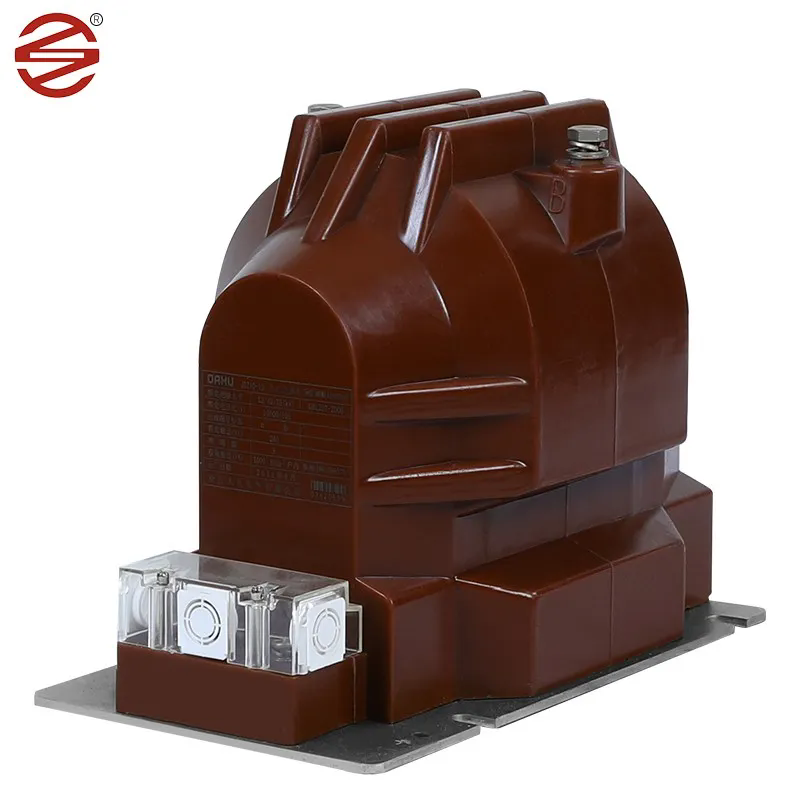Why Are Voltage Transformers Essential for Modern Electrical Systems?
2024-11-13
In the world of electrical power, the smooth and efficient transmission of electricity is crucial to our daily lives. From powering homes to fueling industries, electrical systems rely on precise voltage levels to ensure safety and functionality. But what happens when the voltage needs to be adjusted to suit different equipment or applications? This is where voltage transformers come into play.
A voltage transformer is a device that adjusts the electrical voltage from one level to another, making it essential for ensuring that electrical systems and devices receive the appropriate voltage to function correctly. In this blog, we’ll explore the importance of voltage transformers, how they work, and why they are a fundamental component of modern electrical systems.
What Is a Voltage Transformer?
A voltage transformer, also known as a step-up or step-down transformer, is an electrical device used to change the voltage of an electrical current. It operates on the principle of electromagnetic induction and is typically used to either increase (step-up) or decrease (step-down) the voltage in an electrical circuit.
- Step-up transformers increase the voltage from a lower level to a higher level, making it suitable for long-distance power transmission.
- Step-down transformers reduce the voltage from a high level to a lower level, making it suitable for use in homes and businesses.
Transformers are commonly found in power stations, electrical grids, and various industrial applications, playing a critical role in electricity distribution.
How Do Voltage Transformers Work?
Voltage transformers operate based on Faraday’s law of induction, which states that a changing magnetic field will induce an electric current in a coil. A transformer consists of two main components: primary windings and secondary windings. These are coils of wire wrapped around a core of magnetic material.
When an alternating current (AC) passes through the primary winding, it creates a magnetic field. This magnetic field then induces a current in the secondary winding. The number of turns in each coil determines whether the voltage is stepped up or stepped down:
- Step-up transformer: The secondary coil has more turns than the primary coil, which increases the voltage.
- Step-down transformer: The secondary coil has fewer turns than the primary coil, which decreases the voltage.
This process allows electrical power to be transmitted efficiently over long distances and safely utilized in homes and businesses.
Why Are Voltage Transformers Essential?
1. Efficient Power Distribution
One of the main reasons voltage transformers are indispensable is their role in efficient power distribution. High-voltage power transmission over long distances is more efficient because it reduces energy loss. By using step-up transformers to increase the voltage at power stations, electricity can travel long distances with minimal loss of energy. Upon reaching its destination, step-down transformers are used to reduce the voltage to a safer, more usable level for consumers.
This efficiency in voltage conversion makes modern electrical grids reliable, ensuring that electricity can be delivered over great distances without significant loss of power. Without voltage transformers, energy distribution would be far less effective, resulting in greater losses and inefficiencies.
2. Safety and Protection for Equipment
Electrical devices are designed to operate at specific voltage levels, and supplying too much or too little voltage can damage sensitive equipment. Voltage transformers are critical in ensuring that electrical systems and devices receive the correct voltage, which is essential for both safety and longevity.
For example, household appliances are typically designed for low voltage (110V or 220V), while industrial equipment may require higher voltages. Voltage transformers ensure that the voltage supplied matches the requirements of the specific equipment, preventing potential damage or failure.
3. Cost Efficiency and Scalability
Voltage transformers help optimize the cost-effectiveness of electrical systems. By stepping up the voltage for transmission and stepping it down at the point of use, transformers ensure that energy is transmitted efficiently over long distances without the need for excessive infrastructure or power losses.
Additionally, voltage transformers make it easier to scale up power systems. With the use of transformers, it’s possible to increase or decrease the voltage as needed, providing flexibility and scalability for growing electrical demands. This scalability is especially important in industries and commercial settings where electrical needs may evolve over time.
4. Versatility Across Applications
Voltage transformers are incredibly versatile and can be used in a variety of applications. Some common uses include:
- Power Stations and Electrical Grids: Voltage transformers are essential for the safe and efficient transmission of power from power plants to consumers.
- Industrial Machinery: Large machines and heavy equipment often require high-voltage electricity, which is then stepped down to usable levels through transformers.
- Home Appliances: Household appliances such as refrigerators, air conditioners, and TVs require specific voltage levels, which are provided through step-down transformers.
- Renewable Energy Systems: Voltage transformers are also used in solar and wind energy systems to convert the voltage to the proper levels for grid connection or storage.
Their adaptability makes voltage transformers a critical component in virtually every sector of the economy.
5. Regulation of Voltage Fluctuations
In electrical grids, voltage fluctuations can occur due to various factors such as changes in demand or faults in the system. Voltage transformers can help regulate these fluctuations by adjusting the voltage levels to stabilize the electrical supply. This regulation is crucial for maintaining the stability and reliability of electrical systems, preventing equipment damage, and ensuring that consumers receive consistent power.
Key Benefits of Voltage Transformers
- Energy Efficiency: They minimize power loss during transmission and ensure that energy is distributed efficiently across long distances.
- Improved Safety: By providing the correct voltage for electrical equipment, voltage transformers prevent overloading and potential damage to devices.
- Cost-Effectiveness: Voltage transformers make it more economical to transmit energy across vast distances, reducing overall operational costs.
- Scalability: They offer flexibility in scaling electrical systems to meet growing demands in both residential and industrial applications.
Conclusion
Voltage transformers are crucial components in the modern electrical system, ensuring the safe, efficient, and reliable transmission of power. Whether you're stepping up the voltage for long-distance transmission or stepping it down for use in your home, these devices provide the necessary conversion to meet the specific needs of various electrical systems.
By making power distribution more efficient, protecting equipment, and enabling the scaling of electrical systems, voltage transformers play an essential role in supporting the infrastructure that powers our homes, businesses, and industries. As technology continues to evolve, the importance of voltage transformers will only grow, contributing to the ongoing development of smarter, more sustainable electrical systems.



